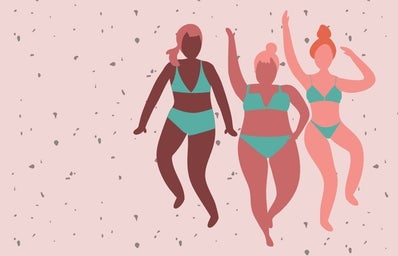If you’ve been anywhere on the internet this past week, it’s likely that you’ve come across a viral photo of Khloé Kardashian missing her and her sisters’ infamous butt implants/injections. People on Twitter and TikTok have coined this as the end of the “BBL (Brazilian Butt Lift) era.” While many have viewed this as a way to celebrate their natural bodies without social media’s pressure to modify them, others whose bodies did not conform to BBL standards claim it’s their time to shine. The latter perpetuates a deeper problem: Women’s body types can go in and out of style.
The Kardashian sisters are known for their shapely bodies and have revolved their entire brand around it. While they have often been evasive or denied any cosmetic surgery, it’s clear they did not get those glutes in a gym. While women should not be shamed for cosmetic surgery, when influencers advertise a particular beauty standard as “natural” and lead various body types in and out of “style,” they are part of the issue.
The BBL body type is not only gained from surgical enhancements, Photoshop or intense exercises, but is based off of a real body type — particularly apparent in Black women. To “cancel” this shape is to cancel a shape which many women naturally have. They cannot remove implants that do not exist to conform to whichever Western beauty standard is next in line.
The Kardashian/Jenners have been called out for “blackfishing” on numerous occasions, especially since they have individually replicated the body type of many Black women by use of lip fillers, BBLs and fake tans to appear darker. This full appropriation is not only racist, but shows how non-Black people benefit from mimicking the natural features of people who are slandered and hypersexualized for those very same features. When white influencers no longer benefit from or tire of this “look,” they can simply switch to a new one, meanwhile Black women must continue to deal with any backlash, racism and hypersexualization that comes their way.
On top of this is the issue of equating a body type to something as trivial as clothing; a trend which will at some point cycle itself out of rotation. It is one thing to celebrate the fact that many women, who may have considered cosmetic surgery, are now accepting their bodies as they are. It is another to contribute to the idea that body types are “trendy” and that yours may now be “in” while another woman’s is “out.”
Bodies don’t naturally change shape because they go out of style. It’s so important to remember that affluent people such as the Kardashian/Jenners have access to nutritionists, trainers and world-class surgeons that allow them to look however they’d like. It can be difficult to forget this when we are frequently bombarded on social media with influencers and celebrities, who have over the years achieved a similar body type – the BBL “look.”
All of this is not to say that you should just be happy with how you look—it’s not always that easy—but we do need to be mindful of contributing to a culture where we celebrate the fact that one woman’s body type is no longer in “fashion” so that we can feel better about our own. We’re better than that.


